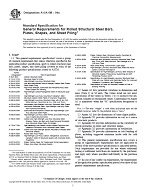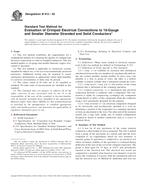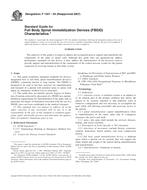1.1 This test method covers three procedures for extraction and measurement of gases dissolved in electrical insulating oil having a viscosity of 20 cSt (100 SUS) or less at 40°C (104°F), and the identification and determination of the individual component gases extracted. Other methods have been used to perform this analysis.
1.2 The individual component gases that may be identified and determined include:
| Hydrogen–H2 | |
| Oxygen–O2 | |
| Nitrogen–N2 | |
| Carbon monoxide–CO | |
| Carbon dioxide–CO2 | |
| Methane–CH4 | |
| Ethane–C2H6 | |
| Ethylene–C2H4 | |
| Acetylene–C2H2 | |
| Propane–C3H8 | |
| Propylene–C3H6 |
1.3 Warning–Mercury has been designated by EPA and many state agencies as a hazardous material that can cause central nervous system, kidney, and liver damage. Mercury, or its vapor, may be hazardous to health and corrosive to materials. Caution should be taken when handling mercury and mercury-containing products. See the applicable product Material Safety Data Sheet (MSDS) for details and EPA's website (http://www.epa.gov/mercury/faq.htm) for additional information. Users should be aware that selling mercury or mercury-containing products, or both, in your state may be prohibited by state law.
1.4 This standard does not purport to address all of the safety concerns, if any, associated with its use. It is the responsibility of the user of this standard to establish appropriate safety and health practices and determine the applicability of regulatory limitations prior to use. For specific warning statements see 6.1.8, 30.2.2 and 30.3.1.
Product Details
- Published:
- 10/10/2002
- Number of Pages:
- 22
- File Size:
- 1 file , 370 KB
- Redline File Size:
- 2 files , 700 KB


